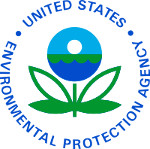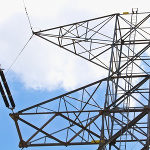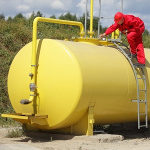 Riker Danzig will present a complimentary morning seminar updating on Site Remediation Jan. 29, from 8 a.m. until 11:50 a.m. Eastern time. The live seminar will be at the Westin Governor Morris, Morristown, NJ.
Riker Danzig will present a complimentary morning seminar updating on Site Remediation Jan. 29, from 8 a.m. until 11:50 a.m. Eastern time. The live seminar will be at the Westin Governor Morris, Morristown, NJ.
Businesses, industry, developers and lenders — and their Licensed Site Remediation Professionals (“LSRPs”) — continue to face new challenges in remediation, redevelopment and financing, and litigation over contaminated sites, Riker Danzig says in its invitation to the seminar. Although practice under the Site Remediation Reform Act and LSRP Program is maturing, new issues continue to emerge and the regulatory landscape is evolving and changing.
The live seminar will include:
- Update on the NJDEP Site Remediation Program, Assistant Commissioner Mark Pedersen (invited)
- Developments at the LSRP Licensing Board
- Regulatory compliance and practice tips
- Discussion of the N.J. Spill Act, off-site and comingled plumes and recent litigation.
The attorneys in the firm’s Environmental Practice Group, among the foremost practitioners on these topics, will discuss these subjects and provide an ample question and answer session.
The program is being submitted for approval for CEC credit by the Site Remediation Professional Licensing Board and CPC credit by the State Board of Professional Engineers.
For practicing attorneys, this program has been approved by the Board on Continuing Legal Education of the Supreme Court of New Jersey for 3.6 hours of total CLE credit. This program has been approved for 3.5 New York CLE Credits.
Please call 973-538-7278 ext.7558 with any questions.
Register for the seminar.
 New Hampshire’s Supreme Court upheld a record $236 million judgment Oct. 2 against Exxon Mobil for its use of a gasoline additive that contaminated groundwater in the state, the Associated Press reports.
New Hampshire’s Supreme Court upheld a record $236 million judgment Oct. 2 against Exxon Mobil for its use of a gasoline additive that contaminated groundwater in the state, the Associated Press reports. Oil industry technology has improved over the last five years since the BP drilling platform explosion and oil spill in the Gulf of Mexico, writes Mintek Mobile Data Solutions in a paper published on its website.
Oil industry technology has improved over the last five years since the BP drilling platform explosion and oil spill in the Gulf of Mexico, writes Mintek Mobile Data Solutions in a paper published on its website. A recent settlement under the U.S. Environmental Protection Agency’s Energy Extraction Enforcement Initiative provides insight into EPA’s approach under the Clean Air Act and highlights the type of “beyond compliance” requirements on which industry should focus, reports King & Spalding in a white paper.
A recent settlement under the U.S. Environmental Protection Agency’s Energy Extraction Enforcement Initiative provides insight into EPA’s approach under the Clean Air Act and highlights the type of “beyond compliance” requirements on which industry should focus, reports King & Spalding in a white paper. The Obama Administration’s first comprehensive survey and analysis of the nation’s basic energy infrastructure needs for the 21st century provide a critical analysis of vulnerabilities in the energy transmission, storage, and distribution systems in the United States, according to a white paper published by Morgan Lewis & Bockius.
The Obama Administration’s first comprehensive survey and analysis of the nation’s basic energy infrastructure needs for the 21st century provide a critical analysis of vulnerabilities in the energy transmission, storage, and distribution systems in the United States, according to a white paper published by Morgan Lewis & Bockius. Penn State Extension has posted online a recorded webinar about the current state of knowledge of methane emissions from the production of shale gas and the importance of learning more about the effects of those emissions.
Penn State Extension has posted online a recorded webinar about the current state of knowledge of methane emissions from the production of shale gas and the importance of learning more about the effects of those emissions. Advanced Energy Economy presents a free on-demand webinar discussing how advanced energy technologies can be utilized by grid operators to safeguard reliability as states modernize their electric power systems under the Clean Power Plan.
Advanced Energy Economy presents a free on-demand webinar discussing how advanced energy technologies can be utilized by grid operators to safeguard reliability as states modernize their electric power systems under the Clean Power Plan. When hydrofracturing of a shale-gas well occurs, millions of gallons of water is injected deep underground at high pressure. Normally, only a fourth to a fifth of that volume flows back above ground. Where does the rest of it go?
When hydrofracturing of a shale-gas well occurs, millions of gallons of water is injected deep underground at high pressure. Normally, only a fourth to a fifth of that volume flows back above ground. Where does the rest of it go? The Enivronmental Law Institute recently sponsored sponsored a seminar taking a look a the critical energy and eivironmental issues that will shape 2015. That event is now available online as an on-demand webinar.
The Enivronmental Law Institute recently sponsored sponsored a seminar taking a look a the critical energy and eivironmental issues that will shape 2015. That event is now available online as an on-demand webinar. Bloomberg BNA has published the 2015 Outlook, which offers a comprehensive exploration of all the top issues facing the environment and energy industry.
Bloomberg BNA has published the 2015 Outlook, which offers a comprehensive exploration of all the top issues facing the environment and energy industry. Clean Energy Group and Croatan Institute have posted an on-demand webinar on the first comprehensive study of U.S. institutional investors’ appetite for green bonds.
Clean Energy Group and Croatan Institute have posted an on-demand webinar on the first comprehensive study of U.S. institutional investors’ appetite for green bonds. Riker Danzig will present a
Riker Danzig will present a  Opower has made available a complimentary on-demand webinar discussing how behavioral design can be a powerful tool across different industries including energy efficiency providers.
Opower has made available a complimentary on-demand webinar discussing how behavioral design can be a powerful tool across different industries including energy efficiency providers.
 The Nicholas Institute for Environmental Policy Solution’s Climate and Energy Program offers an in-depth on-demand explanation of the U.S. Environmental Protection Agency’s Clean Power Plan, which the EPA proposed in June, to control carbon dioxide emissions from existing power plants under section 111(d) of the Clean Air Act.
The Nicholas Institute for Environmental Policy Solution’s Climate and Energy Program offers an in-depth on-demand explanation of the U.S. Environmental Protection Agency’s Clean Power Plan, which the EPA proposed in June, to control carbon dioxide emissions from existing power plants under section 111(d) of the Clean Air Act. The Center for Resource Solutions has posted a complimentary on-demand webinar outlining guidelines for states to use existing renewable energy certificate (REC) tracking systems as an integral part of state compliance for the EPA’s Clean Power Plan.
The Center for Resource Solutions has posted a complimentary on-demand webinar outlining guidelines for states to use existing renewable energy certificate (REC) tracking systems as an integral part of state compliance for the EPA’s Clean Power Plan.